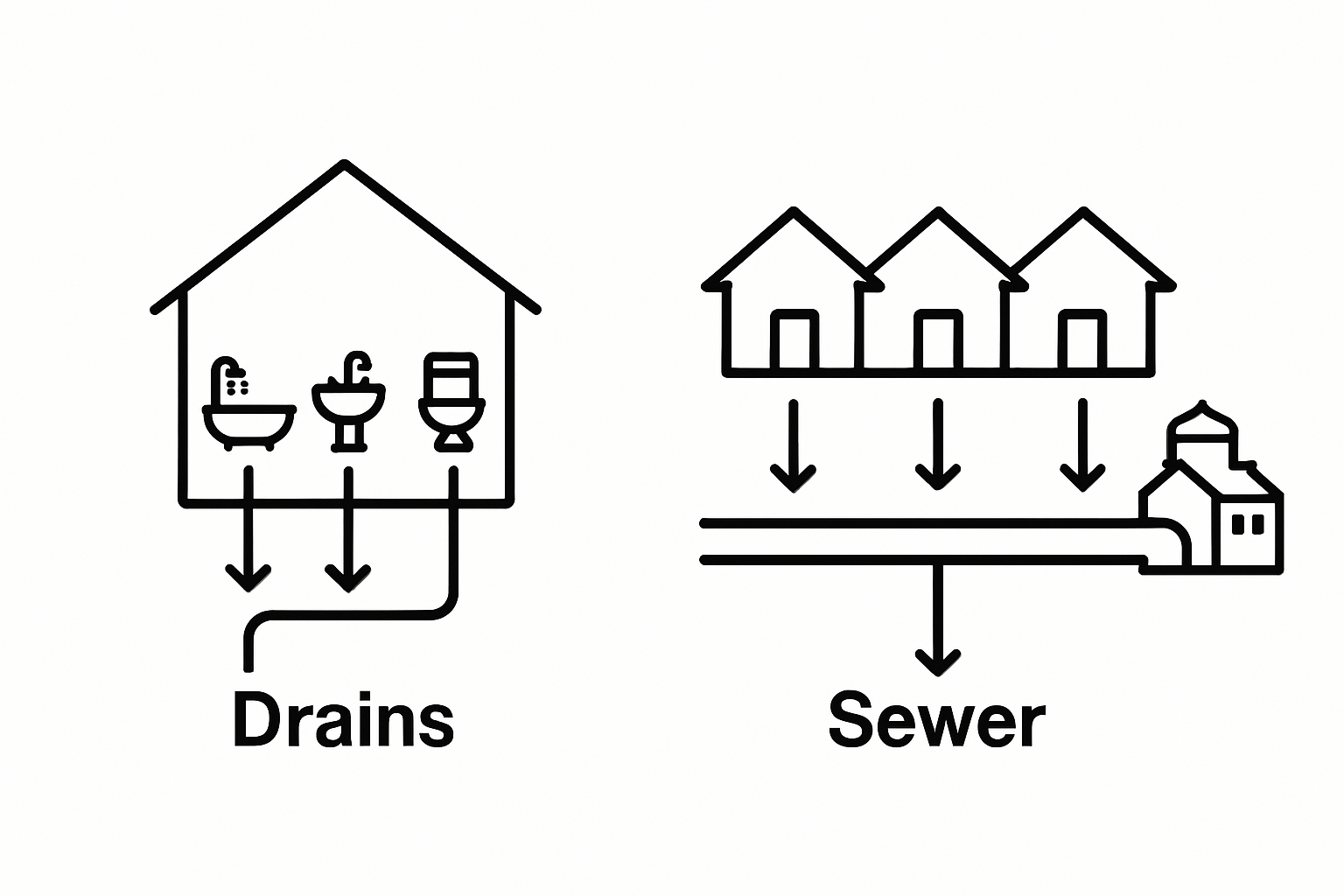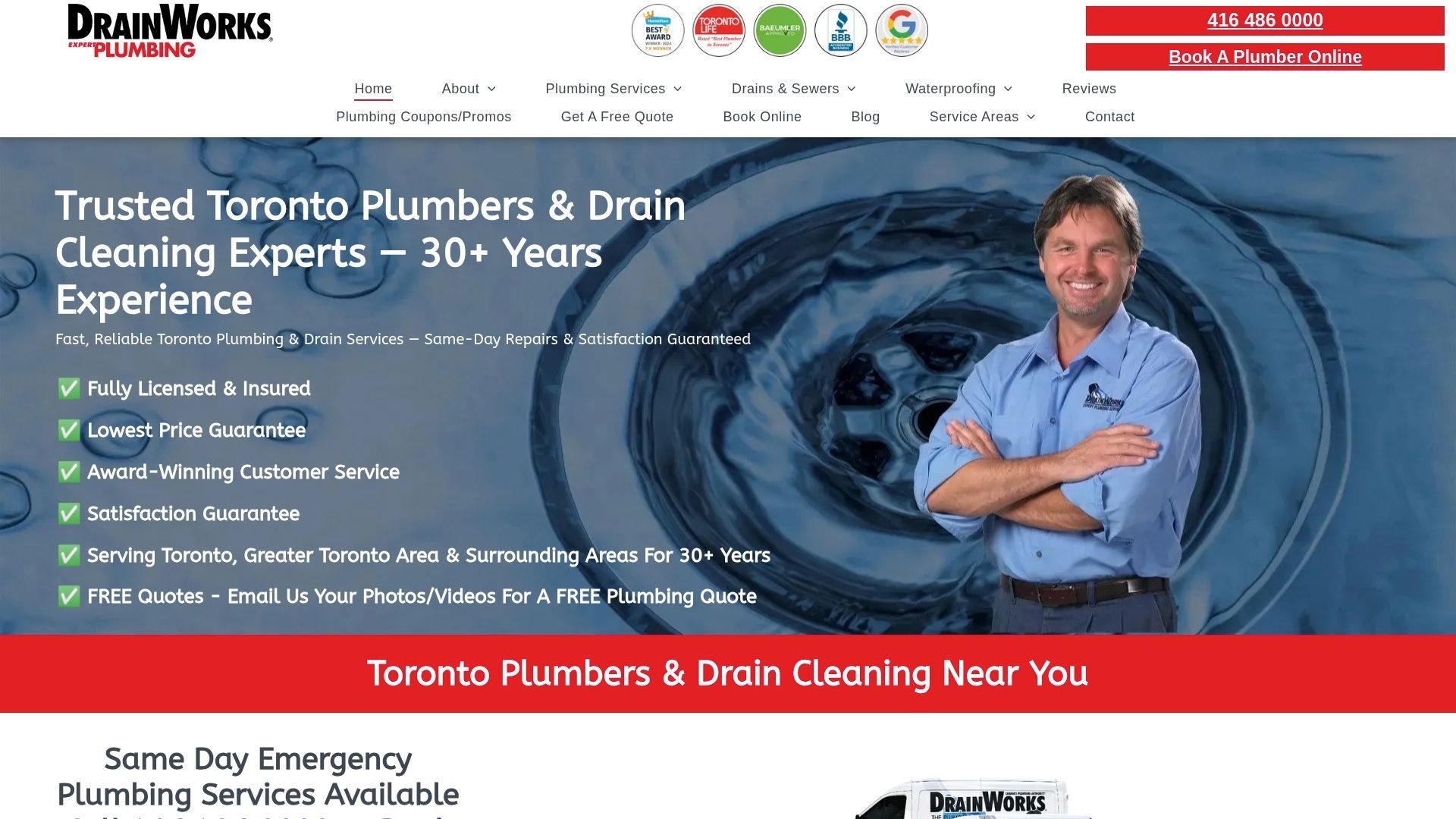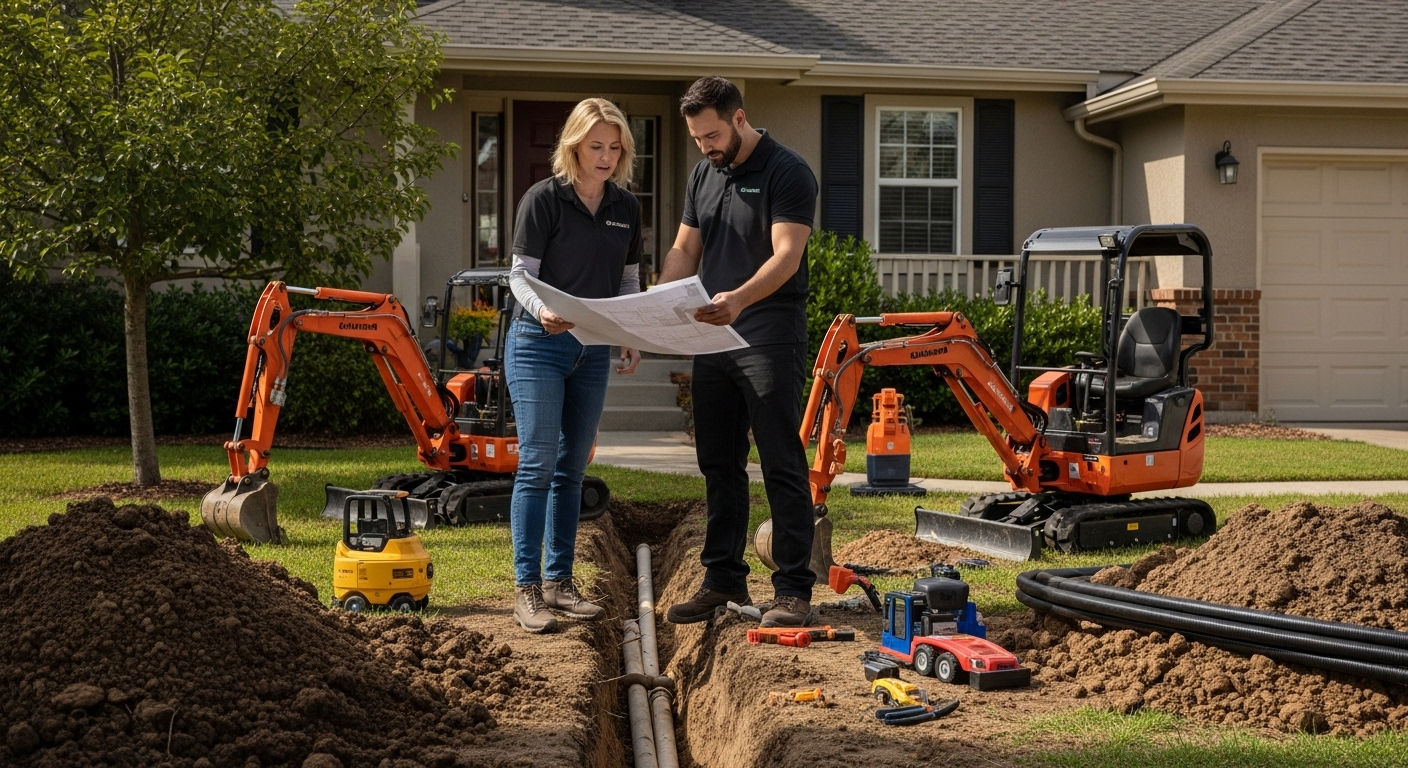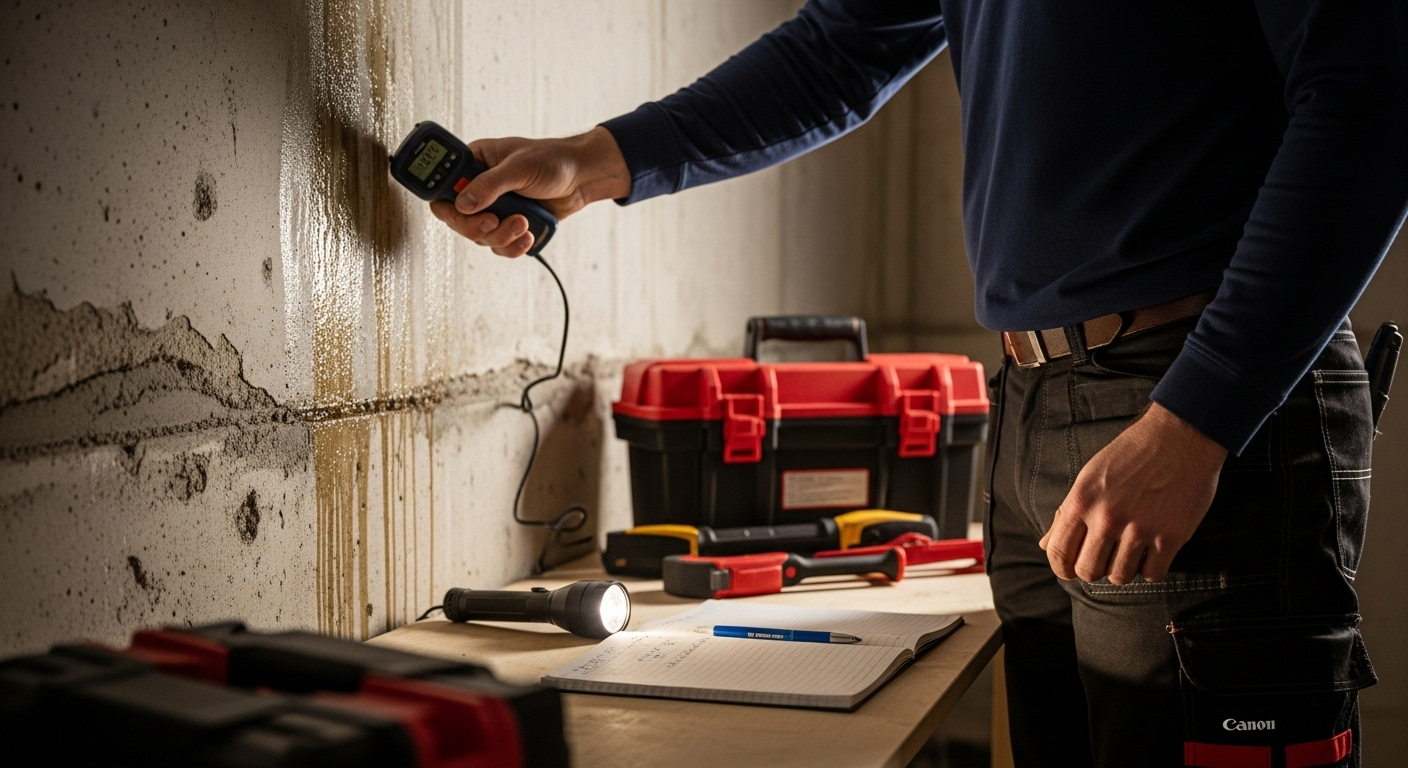Understanding the Difference Between Drains and Sewers

Most people never think twice about what happens to water after it vanishes down the drain. Yet an average Canadian household sends over 300 litres of water into drains and sewers every single day. Surprising, right? The real shock comes when you find out that drains and sewers are not just different pipes but two totally separate systems with unique roles in your home and city. Find out why this hidden split matters more than you might expect.
Table of Contents
- Defining Drains: What They Are And How They Function
- Understanding Sewers: Types And Their Purpose In Waste Management
- Key Differences Between Drains And Sewers: A Comparative Analysis
- Why The Difference Matters: Implications For Homeowners And Property Owners
- Real-World Context: How Drains And Sewers Work Together In Urban Areas
Quick Summary
| Takeaway | Explanation |
|---|---|
| Understand drains operate locally | Drains function within individual properties, managing immediate waste removal from fixtures such as sinks and toilets. |
| Sewers manage regional waste | Sewer systems transport liquid waste across communities, connecting multiple properties to treatment facilities. |
| Maintenance differs by ownership | Homeowners are responsible for drains on their property, while municipalities manage sewer systems, affecting repair responsibilities. |
| Design impacts functionality | Drain and sewer systems are designed based on specific needs, such as water volume and environmental conditions, ensuring efficiency. |
| Infrastructure affects property value | Understanding drain and sewer systems can help homeowners budget for repairs and maintain property value. |
Defining Drains: What They Are and How They Function
A drain is a critical plumbing infrastructure component designed to remove excess water and waste from buildings, directing these materials away from living spaces and structures. Unlike comprehensive sewer systems, drains operate on a more localized and immediate level, functioning as the first point of liquid disposal within residential and commercial environments.
The Basic Mechanics of Drain Systems
Drain systems rely on fundamental principles of gravity and fluid dynamics to effectively move water and waste. When water enters a drain through fixtures like sinks, showers, or toilets, it flows through a network of pipes positioned at strategic angles that leverage gravitational pull. These pipes are typically constructed from materials such as PVC, copper, or cast iron, each selected for durability and specific performance characteristics.
Key elements of drain functionality include:
- Gravity-Based Movement : Water naturally flows downward through pipes
- Pipe Slope : Carefully engineered angles ensure smooth waste transportation
- Ventilation : Integrated air passages prevent pressure buildup and facilitate proper drainage
Purpose and Design Considerations
The primary purpose of drains extends beyond simple water removal. They serve multiple critical functions in maintaining hygiene, preventing water damage, and protecting structural integrity. Proper drain design accounts for factors like water volume, potential debris, and environmental conditions.
Homeowners should understand that drains are localized systems within individual buildings, connecting internal plumbing fixtures to broader municipal sewer networks or septic systems. learn more about residential drainage solutions can help you better comprehend these intricate systems.
While drains might seem straightforward, their design involves complex engineering principles that ensure efficient, reliable water management. Understanding their mechanics helps homeowners appreciate the sophisticated infrastructure working silently beneath their floors and behind their walls.
Understanding Sewers: Types and Their Purpose in Waste Management
Sewers represent complex underground infrastructure systems responsible for transporting liquid waste and wastewater from residential, commercial, and industrial locations to treatment facilities or disposal sites. Unlike individual building drains, sewers operate on a broader municipal or regional scale, managing waste movement across entire communities.
Categories of Sewer Systems
Sewer systems are not uniform but comprise multiple specialized types designed to address specific waste management challenges. The primary categories include sanitary sewers, storm sewers, and combined sewer systems, each serving distinct environmental and public health functions.
Key characteristics of sewer system classifications include:
- Sanitary Sewers : Transport household and industrial wastewater to treatment plants
- Storm Sewers : Collect rainwater and surface runoff, directing it away from populated areas
- Combined Sewers : Manage both wastewater and stormwater through a single network
Waste Management and Environmental Protection
The fundamental purpose of sewer systems extends far beyond simple waste transportation. These intricate networks play a crucial role in protecting public health, preventing environmental contamination, and maintaining urban infrastructure integrity. Modern sewer systems incorporate advanced engineering principles to manage waste efficiently while minimizing ecological impact.
explore municipal waste management strategies provides deeper insights into the complexities of urban waste management.
Engineering and municipal planning teams carefully design sewer systems to accommodate population growth, environmental conditions, and evolving waste management technologies.
This table summarizes the primary categories of sewer systems discussed in the article and highlights their specific functions and distinctive features.
| Sewer System Type | Main Function | Key Features |
|---|---|---|
| Sanitary Sewer | Transports household and industrial wastewater | Connects to treatment plants; hygienic |
| Storm Sewer | Collects and moves rainwater and runoff | Prevents flooding; handles surface water |
| Combined Sewer | Manages both wastewater and stormwater | Single network for dual waste streams |
| Understanding these systems helps residents appreciate the sophisticated infrastructure working continuously beneath urban landscapes. |
Key Differences Between Drains and Sewers: A Comparative Analysis
Drains and sewers are essential components of water management infrastructure, yet they function distinctly within residential and municipal environments. While both systems manage liquid waste and water flow, their scale, purpose, and operational mechanisms differ significantly.
Scope and Scale of Operation
The primary distinction between drains and sewers lies in their operational scope. Drains are localized systems serving individual buildings or specific areas, connecting internal plumbing fixtures to larger waste management networks. In contrast, sewers are expansive municipal systems that collect and transport wastewater from multiple properties across entire neighborhoods or cities.
Key comparative characteristics include:

- Jurisdiction : Drains operate within property boundaries, sewers span entire municipal regions
- Ownership : Individual property owners manage drains, municipal governments control sewer systems
- Complexity : Drains have simpler design, sewers involve intricate engineering and infrastructure
Functional Responsibilities and Design
Functional differences extend beyond physical infrastructure. Drains primarily focus on immediate water removal from specific fixtures like sinks, showers, and toilets. Sewers, however, manage comprehensive waste transportation, incorporating multiple subsystems designed to handle varying waste types and environmental conditions.
learn more about urban water management solutions can provide deeper insights into these complex systems.
Understanding these distinctions helps homeowners and residents appreciate the sophisticated networks working silently beneath urban landscapes, ensuring efficient waste management and environmental protection.
To help clarify the main distinctions between drains and sewers, the following table compares their core features, responsibilities, and operational scope.
| Feature | Drains | Sewers |
|---|---|---|
| Operational Scope | Individual buildings or properties | Municipal or regional areas |
| Ownership | Property owner | Municipality or local government |
| Main Function | Removes water and waste from fixtures | Transports wastewater to treatment facilities |
| Complexity | Simple network, localized | Complex infrastructure, large-scale |
| Maintenance Responsibility | Homeowner | Municipality |
| Examples | Sink, shower, toilet drains | Sanitary sewers, storm sewers, combined systems |
| Impact on Property Value | Direct (maintenance and repair costs) | Indirect (service quality, connection compliance) |
Why the Difference Matters: Implications for Homeowners and Property Owners
Understanding the nuanced differences between drains and sewers is not merely an academic exercise but a critical aspect of responsible property ownership. These distinctions directly impact maintenance responsibilities, potential repair costs, and overall property infrastructure management.
Maintenance and Repair Responsibilities
Homeowners must recognize that their responsibilities vary significantly depending on whether they are dealing with drains or sewers. Private drains within property boundaries are the direct responsibility of the property owner, requiring proactive maintenance and timely repairs. Municipal sewers, conversely, fall under government jurisdiction, though homeowners still play a crucial role in maintaining connection points and preventing system disruptions.
Key maintenance considerations include:
- Drain Maintenance : Regular cleaning, addressing blockages, and preventing internal plumbing issues
- Sewer Connection : Ensuring proper lateral connections and reporting potential municipal system problems
- Proactive Inspections : Periodic assessments to prevent potential infrastructure failures
Financial and Legal Implications
The distinction between drains and sewers carries substantial financial and legal ramifications. Drain repairs are typically out-of-pocket expenses for property owners, potentially involving significant costs for complex plumbing issues. Sewer system problems, while managed by municipalities, can still indirectly impact homeowners through potential service interruptions or required property-side repairs.
discover comprehensive property drainage solutions to help navigate these complex infrastructure challenges.
By understanding these systems, homeowners can make informed decisions, budget effectively for potential repairs, and contribute to the overall health of their local water management infrastructure. Proactive knowledge and strategic maintenance can prevent costly emergencies and ensure smooth, efficient water disposal for residential properties.
Real-World Context: How Drains and Sewers Work Together in Urban Areas
Urban water management represents a complex, interconnected system where drains and sewers collaborate seamlessly to protect public health, prevent environmental contamination, and maintain infrastructure integrity. These systems work in concert, creating a sophisticated network that manages water flow across residential, commercial, and municipal environments.
Interconnected Water Management Systems
Drains and sewers function as complementary components within a broader urban infrastructure. Individual building drains collect wastewater from specific fixtures, channeling liquids through property-level pipes. These localized systems then connect to municipal sewer networks, which transport waste to treatment facilities or disposal sites. This intricate relationship ensures efficient water management and prevents potential environmental and health risks.
Key collaborative features include:
- Direct Connection : Individual property drains link directly to municipal sewer systems
- Waste Transportation : Seamless transfer of water from local to regional infrastructure
- Environmental Protection : Coordinated approach to managing liquid waste
Challenges in Urban Water Infrastructure
Modern urban areas face increasing challenges in water management due to population growth, climate change, and aging infrastructure. Combined sewer systems demonstrate the most complex interaction between drains and sewers, handling both stormwater runoff and sanitary waste through a single network. During heavy rainfall, these systems can become overwhelmed, potentially causing backup and environmental stress.
explore advanced urban drainage solutions provides deeper insights into managing these intricate urban water systems.
Understanding the symbiotic relationship between drains and sewers helps residents appreciate the sophisticated infrastructure protecting their communities, managing water resources, and maintaining public health standards in increasingly complex urban environments.

Protect Your Home’s Plumbing with Toronto’s Experts
Confused by the difference between drains and sewers? If you have ever worried about clogged pipes, unexpected backups or costly repairs, you already know how important a well-maintained drainage and sewer system is for your home. Understanding these systems is the first step in preventing damage and avoiding health risks. Toronto homeowners trust DrainWorks Plumbing because we have over 30 years of experience fixing local drain and sewer challenges, from stubborn blockages to main line upgrades. We offer clear, up-front pricing and only send qualified, full-time plumbers — not commissioned salespeople — to your door.

Ready to stop drain and sewer worries for good? Visit DrainWorks Plumbing and schedule a same-day appointment. If you want to read more about our professional drain and sewer solutions before you call, learn how we solve backups and drainage issues. Don’t wait until a small issue becomes a big headache — trust Toronto’s highest-rated plumbers to keep your water flowing right.
Frequently Asked Questions
What is the main difference between drains and sewers?
Drains are localized systems that remove excess water and waste from individual buildings, whereas sewers are expansive municipal systems that transport wastewater from multiple properties to treatment facilities.
How does maintenance responsibility differ between drains and sewers?
Homeowners are responsible for maintaining and repairing their drains, which are located within property boundaries. In contrast, sewer systems are managed by municipal authorities, although homeowners must ensure proper connections.
What are the types of sewer systems, and how do they function?
There are three main types of sewer systems: sanitary sewers for transporting waste, storm sewers for managing rainwater, and combined sewers that handle both types of waste through a single network.
Why is understanding the difference between drains and sewers important for homeowners?
Knowing the difference impacts maintenance responsibilities, repair costs, and how homeowners interact with municipal services, ultimately influencing property value and overall infrastructure management.













